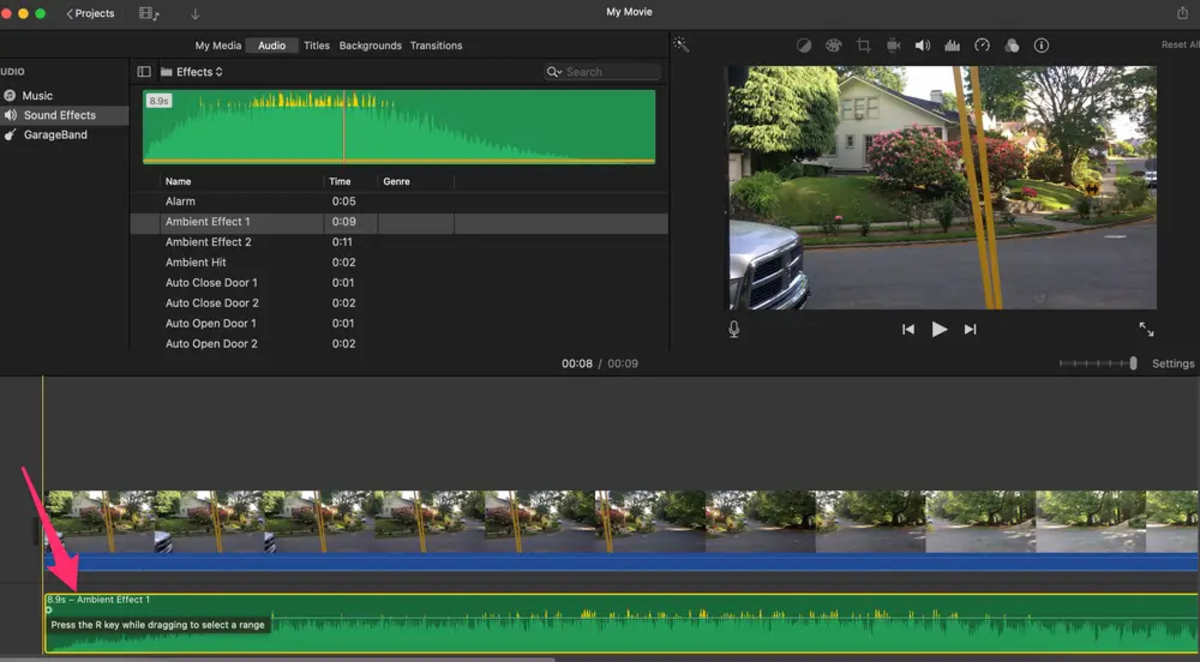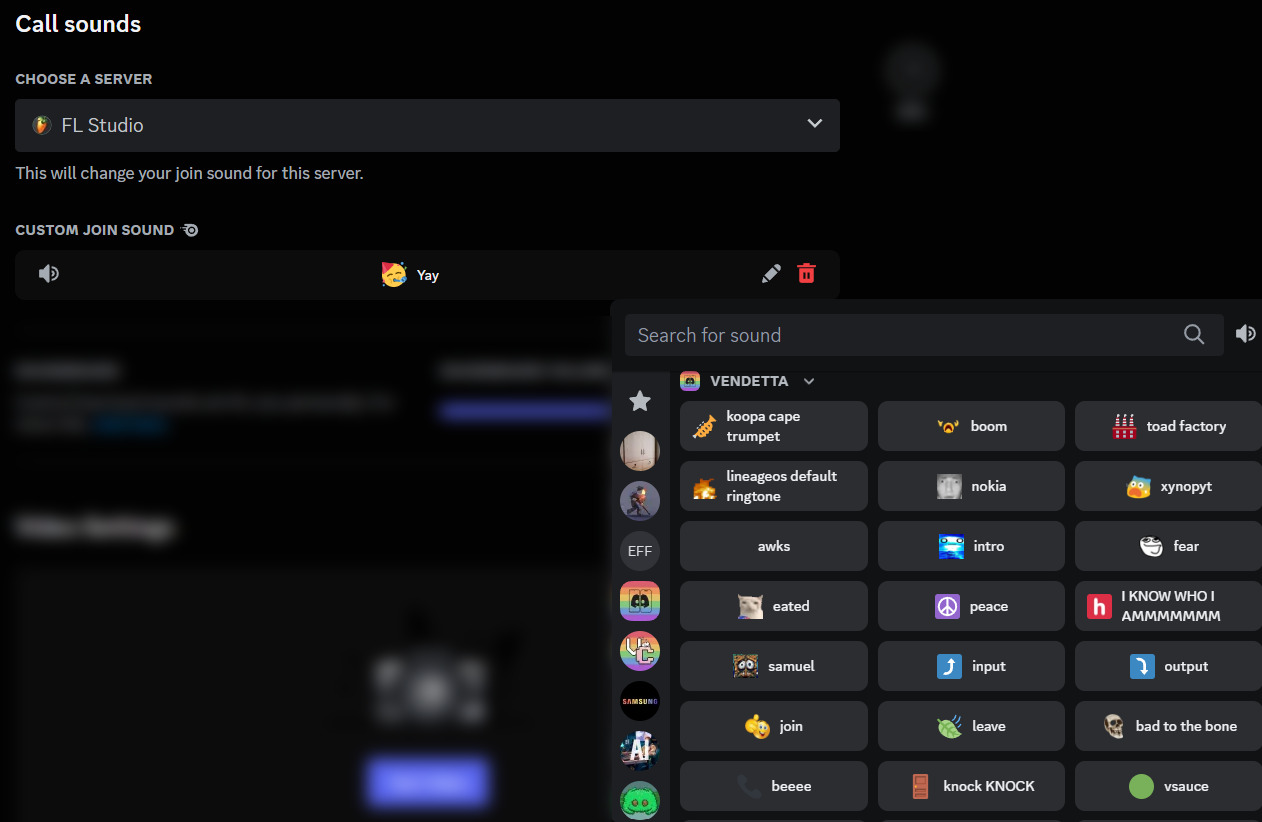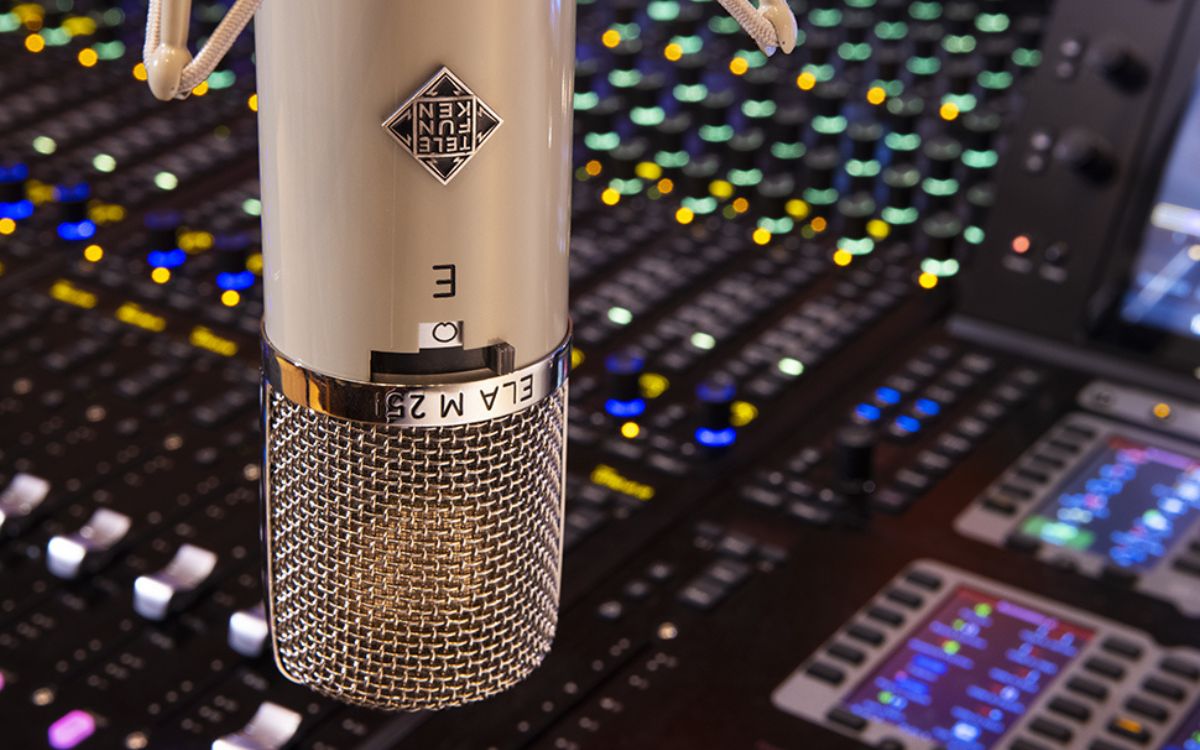Home>Production & Technology>Sound Effects>How To Write Sound Effects In A Script


Sound Effects
How To Write Sound Effects In A Script
Published: November 20, 2023
Learn how to effectively incorporate sound effects into your script and enhance the overall audio experience. Discover tips and techniques to captivate your audience with immersive sound.
(Many of the links in this article redirect to a specific reviewed product. Your purchase of these products through affiliate links helps to generate commission for AudioLover.com, at no extra cost. Learn more)
Table of Contents
- Introduction
- Importance of Sound Effects in a Script
- Understanding the Role of Sound Effects
- Creating Sound Effects Descriptions
- Choosing the Right Sound Effects
- Incorporating Sound Effects into Dialogue
- Formatting Sound Effects in a Script
- Examples of Well-Written Sound Effects
- Tips for Writing Effective Sound Effects
- Conclusion
Introduction
Welcome to the fascinating world of sound effects in scripts! Whether you’re a budding screenwriter or an experienced playwright, understanding how to write sound effects can greatly enhance the visual and auditory experience of your audience. Sound effects provide a layer of depth and immersion, transporting viewers and readers into the world of your story.
In this article, we will explore the importance of sound effects in scriptwriting and discuss the various elements involved in crafting effective sound effect descriptions. We will also delve into the process of selecting the right sound effects and integrating them seamlessly into dialogue.
Sound effects not only add realism and atmosphere to your script, but they also contribute to the overall emotional impact of a scene. Imagine a suspenseful moment without the eerie creaking of a door or an intense battle sequence devoid of the thunderous clash of swords. These moments lose their impact without the proper sound effects to accompany them.
Furthermore, sound effects can be used to emphasize and highlight specific details or actions within a scene. When properly utilized, they can draw attention to crucial plot points or enhance the comedic timing of a humorous exchange. Sound effects have the power to engage the senses of your audience, elevating the overall quality of your script.
So, whether you are writing a screenplay for a film, a script for a play, or even a podcast episode, mastering the art of sound effects will undoubtedly enhance the impact and success of your work. Join us as we dive into the world of sound effects in scriptwriting and uncover the key aspects of creating immersive and engaging auditory experiences.
Importance of Sound Effects in a Script
Sound effects play a crucial role in enhancing the storytelling experience and bringing scripts to life. They have the power to create a sense of realism, heighten emotions, and immerse the audience in the unfolding narrative. Here are some key reasons why sound effects are important in a script:
- Setting the Atmosphere: Sound effects can set the tone and atmosphere of a scene. Whether it’s the serene chirping of birds in a peaceful park or the tense ticking of a time bomb, the right sound effects can transport the audience into the specific ambiance you want to create.
- Enhancing Emotional Impact: Sound effects can amplify the emotional impact of a scene. The gentle piano melody during a heartfelt conversation or the booming thunder during a climactic moment can evoke powerful emotions in the audience, intensifying their engagement with the story.
- Creating Realism: Sound effects add a layer of realism to the script by mimicking sounds from the real world. From the footsteps on a creaky wooden floor to the screeching of car tires, these auditory details help the audience connect with the characters and environment on a more immersive level.
- Directing Attention: Sound effects can draw the audience’s attention to specific actions or details within a scene. They guide the viewers’ focus towards important elements, helping to emphasize key plot points or character actions.
- Establishing Transitions: Sound effects can smoothen transitions between scenes, indicating changes in time, location, or mood. They provide a seamless flow between different story elements and create a cohesive narrative structure.
Without sound effects, scripts can feel flat and lacking in depth. The absence of these auditory cues diminishes the overall impact of the story and fails to engage the audience fully. Sound effects have the power to elevate scripts from mere words on paper to captivating sensory experiences that resonate with viewers and readers alike.
In the next sections, we will explore how to craft effective sound effect descriptions, choose the right sound effects, and seamlessly incorporate them into dialogue, adding layers of richness and immersion to your scripts.
Understanding the Role of Sound Effects
Sound effects serve as an integral part of storytelling, adding depth, texture, and emotion to scenes and characters. To effectively incorporate sound effects into your script, it is essential to understand their role and how they contribute to the overall narrative. Here are some key aspects to consider:
- Creating Atmosphere: Sound effects help in establishing the atmosphere of a scene, setting the mood and enhancing the audience’s immersion. From the bustling streets of a city to the windswept fields of a countryside, the right sound effect can transport viewers to different locations and evoke the desired emotional response.
- Enhancing Action and Movement: Sound effects are particularly vital in action-packed scenes, highlighting movements and intensifying the impact. The crisp sound of punches landing in a fight scene or the revving of engines in a thrilling chase sequence adds excitement and energy, making the visual experience more dynamic.
- Revealing Character Traits: Sound effects can reveal subtle aspects of a character’s personality or situation. For example, the way a character handles their keys or the sound of their footsteps can provide insight into their demeanor or level of confidence. These small details can enrich the audience’s understanding of the characters.
- Immersing the Audience: Sound effects help immerse the audience in the fictional world of the script, fostering a sense of realism and engagement. From the crackling of a campfire to the chirping of crickets in a forest, these auditory cues bring scenes to life and make the audience feel like they are part of the story.
- Providing Transitions: Sound effects can serve as bridges between different scenes or transitions within a single scene. They aid in smoothing the flow of the narrative and signaling changes in time, location, or mood. The right sound effect can ensure a seamless and coherent storytelling experience.
Understanding the role of sound effects allows you to make intentional choices that enhance the audience’s perception and create a more immersive script. Carefully crafting the sound effect descriptions and selecting appropriate sounds will contribute to the overall effectiveness of your storytelling.
In the next sections, we will delve into the process of creating compelling sound effect descriptions and choosing the right sounds to breathe life into your scripts.
Creating Sound Effects Descriptions
When it comes to writing sound effects descriptions in a script, clarity and specificity are key. A well-written sound effect description not only helps the production team understand the desired audio but also allows the reader to imagine and experience the intended soundscape. Here are some essential tips for creating effective sound effect descriptions:
- Be Specific: Instead of using generic terms like “loud noise” or “scary sound,” provide precise details that convey the exact sound you envision. For example, “a bone-chilling scream” or “a thunderous explosion” paints a more vivid picture in the reader’s mind.
- Use Sensory Language: Engage the reader’s senses by describing the sound in sensory terms. Consider the texture, pitch, volume, and quality of the sound. For instance, “a piercing, high-pitched screech” or “a deep rumbling roar.”
- Include Action Verbs: Use action verbs to convey the movement or impact associated with the sound effect. This adds dynamism to the description and enhances the reader’s understanding. For example, “the glass shatters with a sharp crack” or “the door slams shut with a resounding thud.”
- Consider Surrounding Context: Take into account the surrounding context of the sound effect and how it complements the scene. Think about the location, time of day, weather conditions, and any other relevant factors that may influence the sound. This level of detail adds depth and authenticity to the script.
- Keep it Concise: While it’s important to be descriptive, it’s equally important to keep the sound effect descriptions concise. Use clear and concise language to convey the desired sound without becoming overly verbose.
- Consider Sound Effects Libraries: Familiarize yourself with sound effects libraries or databases that can provide you with a wide range of pre-recorded sounds. This can help you find the appropriate sound effects and ensure accuracy in your descriptions.
Remember, the goal of sound effect descriptions is to provide a clear vision for the audio elements of your script. By utilizing specific language, sensory details, and appropriate verbs, you can effectively communicate the desired sound effects to the production team and enhance the reader’s experience.
In the next section, we will explore how to choose the right sound effects to enhance your script and create a compelling audio experience.
Choosing the Right Sound Effects
Choosing the right sound effects for your script requires careful consideration and an understanding of the desired impact you want to achieve. The right sound effect can enhance the storytelling, evoke specific emotions, and create an immersive experience for the audience. Here are some tips to help you choose the perfect sound effects:
- Align with the Story: Consider the genre, tone, and themes of your script. The sound effects should align with the story you are telling and enhance the overall narrative. For example, if you are writing a horror film, eerie and suspenseful sound effects can heighten the tension and create a sense of dread.
- Be Mindful of Realism: While sound effects can be creative and imaginative, it is crucial to maintain a level of realism. Choose sound effects that are believable and relevant to the scene or environment. Pay attention to the context and ensure the sound effects accurately reflect the actions or objects portrayed.
- Consider Emotional Impact: Sound effects have the power to evoke specific emotions in the audience. Choose sounds that elicit the desired emotional response for each scene. For instance, a gentle and soothing melody can create a sense of calm and relaxation, while a heart-pounding beat can generate excitement and anticipation.
- Experiment with Combinations: Don’t be afraid to blend multiple sound effects together to create unique auditory experiences. Layering different sounds can add depth and richness to the overall audio landscape and make the scenes more dynamic.
- Collaborate with the Production Team: Work closely with the sound designers, audio engineers, and directors to ensure your vision aligns with their expertise. Communicate your intentions clearly and be open to their suggestions and input. Collaboration will help refine the sound choices and result in a more cohesive final product.
- Consider Budget and Resources: Keep in mind the production budget and available resources when choosing sound effects. While it’s important to aim for high-quality and impactful sounds, it’s equally important to be mindful of the practicality and feasibility of obtaining or creating those sounds within the given constraints.
Remember, the right sound effects can elevate the impact of your script and engage the audience on a deeper level. Choose sounds that align with the story, amplify emotions, and contribute to the overall coherence and immersion of the script.
In the next section, we will explore how to seamlessly incorporate sound effects into dialogue, creating a harmonious blend of audio and spoken words.
Incorporating Sound Effects into Dialogue
Incorporating sound effects into dialogue involves seamlessly integrating the auditory elements with the spoken words, creating a cohesive and immersive experience for the audience. Here are some tips on how to effectively incorporate sound effects into your script’s dialogue:
- Use Parenthetical Descriptions: Include descriptive instructions within parentheses that indicate the sound effect to be integrated with specific lines of dialogue. For example, “(laughs triumphantly)” or “(whispering softly).” This helps guide the actors, sound designers, and directors in understanding the intended audio cues.
- Show Delayed Reactions: Occasionally, you may want to depict the characters’ reactions to certain sound effects. To do this, include actions or beats in the script that showcase their response. For instance, “(Startled) What was that?” or “(Eyes widen at the sudden gunshot).” This allows the audience to experience the impact of the sound effect alongside the characters.
- Balance Dialogue and Sound Effects: Strike a balance between dialogue and sound effects, ensuring that neither one overpowers the other. Sound effects should enhance the dialogue and add depth to the scene, rather than overshadowing or distracting from the spoken words. Consider the timing and pacing of both elements to create a harmonious blend.
- Highlight Key Moments: Use sound effects to accentuate crucial moments in the script. These moments may include dramatic reveals, important actions, or significant plot twists. By incorporating well-timed sound effects, you can emphasize the impact of these scenes and heighten the audience’s engagement and emotional response.
- Consider Sound Effects as Characters: In some cases, sound effects can take on a character-like presence in the script. They can represent an unseen force or evoke a particular mood. Treat these sound effects as integral elements of the story, giving them weight and significance in your descriptions and allowing them to shape the narrative.
- Leave Room for Interpretation: While it is important to provide clear instructions for sound effects, also allow room for interpretation by the sound designers and audio team. Trust their expertise and creativity to bring their own unique ideas and solutions to your script. This collaboration can result in unexpected and exciting soundscapes.
By thoughtfully integrating sound effects into dialogue, you create a more immersive and engaging experience for the audience. The combination of spoken words and auditory elements works together to bring your script to life, amplifying the impact and emotional resonance of each scene.
In the next section, we will discuss the formatting guidelines for sound effects in a script, ensuring that they are presented in a clear and accessible manner.
Formatting Sound Effects in a Script
Properly formatting sound effects in a script is essential for clear communication and seamless integration with the other elements of the script. Here are some useful guidelines for formatting sound effects:
- Use Capitalization: Capitalize each sound effect description to make it stand out from the surrounding dialogue and action lines. This helps the reader and production team easily identify and distinguish the sound effects.
- Use Parentheses or Brackets: Enclose the sound effect description within parentheses or brackets, separating it from the main body of the script. This visually distinguishes the sound effect from the other elements and clearly indicates its auditory nature.
- Be Consistent: Maintain consistency in formatting throughout the script. Choose either parentheses or brackets and use the same style consistently for all sound effects. This ensures clarity and avoids confusion during production.
- Place Sound Effects on a Separate Line: Start a new line for each sound effect, especially if it is a significant or impactful sound. This allows it to stand out and draws attention to its presence, ensuring that it is noticed and properly integrated into the scene.
- Provide Descriptive Details: While keeping the formatting concise, include enough descriptive details within the sound effect description to convey the desired sound. This helps the production team understand the exact audio cue you intend and facilitates their execution of it.
- Indicate Timing: If the timing or synchronization of the sound effect is crucial to the scene, you can include specific timing instructions. For example, “(Sound of a door slamming, perfectly timed with character’s exit) – 3 seconds after last line.” This provides guidance for the timing of the sound effect in relation to other elements of the script.
- Consider Text-to-Speech Readability: Keep in mind that your script may be read aloud using text-to-speech software during production. Ensure that the formatting of sound effects allows for smooth and natural-sounding delivery when read by these tools.
By following these formatting guidelines for sound effects, you ensure that they are clearly presented and easily understood by the reader and production team. Clear formatting aids in the smooth integration of sound effects into the overall production, enhancing the overall quality of the script’s auditory experience.
In the next section, we will provide examples of well-written sound effects in scripts to further illustrate their effective implementation.
Examples of Well-Written Sound Effects
To better understand the art of writing sound effects in a script, here are some examples of well-written sound effects that demonstrate effective implementation and enhance the storytelling experience:
- (Sound of distant thunder rumbling) – This sound effect description sets the ominous tone and foreshadows an imminent storm, creating a sense of anticipation and unease in the audience.
- (Glass shattering with a sharp crash) – This description effectively conveys the suddenness and impact of a broken glass, adding intensity to a tense scene and grabbing the attention of the audience.
- (Heavy footsteps approaching) – This sound effect description creates a sense of suspense and builds anticipation as the audience anticipates the arrival of a character or a pivotal moment in the story.
- (Car engine revving, tires screeching) – The combination of these two sound effects captures the thrilling intensity of a high-speed chase, instantly immersing the audience in the action and heightening their excitement.
- (Whispering wind through the trees) – This gentle and atmospheric sound effect transports the audience to a serene forest setting, establishing a calm and peaceful ambiance within the scene.
These examples demonstrate how well-written sound effect descriptions can effectively set the mood, emphasize key moments, and immerse the audience in the story. By using specific and descriptive language, these sound effect descriptions create vivid auditory experiences that complement the visual elements of the script.
Remember, sound effects should be chosen and described in a way that enhances the narrative and engages the audience’s senses. The goal is to evoke emotions, build tension, and create a more immersive experience that captivates the viewers or readers.
In the next section, we will provide some valuable tips for writing effective sound effects in scripts, helping you further refine your craft and create compelling auditory experiences.
Tips for Writing Effective Sound Effects
Writing effective sound effects in scripts requires attention to detail and a creative approach. Here are some valuable tips to help you craft impactful sound effect descriptions:
- Be Specific and Evocative: Use precise and evocative language to describe the desired sound effect. Consider the tone, volume, texture, and emotion that the sound should convey.
- Consider the Story and Genre: Tailor the sound effects to the story’s genre and themes. Sound effects should align with the overall aesthetic and enhance the narrative elements.
- Collaborate with Sound Professionals: Engage in open communication with sound designers, audio engineers, and directors. Their expertise can help refine and fine-tune the sound effect choices.
- Think about Timing and Placement: Consider when and where the sound effect will have the most impact within the scene. Timing can heighten suspense, emphasize action, or punctuate dramatic moments.
- Balance Sound Effects with Dialogue and Action: Ensure that sound effects harmonize with dialogue and action lines. They should complement each other rather than compete for the audience’s attention.
- Experiment with Layering and Mixing: Consider layering multiple sound effects or blending them with music to create unique audio experiences. This can add depth and richness to the overall sound design.
- Use Sound Effects Sparingly: Reserve sound effects for moments that truly benefit from their inclusion. Using them sparingly increases their impact and prevents overloading the script with unnecessary audio cues.
- Read and Revise: Read your sound effect descriptions aloud to ensure they flow smoothly when spoken. Revise and refine the wording, pacing, and placement of the sound effects for optimal impact.
- Consider the Practicality: Keep in mind the practicality of executing the sound effects within the production’s budget and resources. Choose sounds that can be realistically created or found in sound libraries.
- Trust Your Intuition: Ultimately, trust your instincts as a writer. The sound effects you envision are uniquely tied to your creative vision. Don’t be afraid to take risks and follow your artistic intuition.
By employing these tips, you can elevate the sound effects in your script, enhancing the overall auditory experience for the audience. Remember to experiment, collaborate, and refine your sound effect descriptions to create a truly immersive and engaging script.
In the final section, we will conclude our exploration of sound effects in scripts, summarizing the key points discussed throughout this article.
Conclusion
Sound effects are a powerful tool in scriptwriting, allowing you to enhance the storytelling experience and engage the audience on a deeper level. By understanding the role of sound effects and mastering the art of incorporating them into your scripts, you can create a more immersive and captivating narrative.
In this article, we explored the importance of sound effects in a script and how they contribute to setting the atmosphere, enhancing emotions, creating realism, and directing the audience’s attention. We discussed the process of crafting effective sound effect descriptions, choosing the right sounds, and seamlessly integrating them into dialogue. We also covered the formatting guidelines, provided examples of well-written sound effects, and shared valuable tips for writing sound effects that leave a lasting impact.
Whether you’re writing for film, television, theater, or any other medium, sound effects can transport the audience and immerse them in the world of your script. By mastering the art of writing sound effects, you can create a more vibrant and engaging experience that captivates and resonates with viewers and readers alike.











